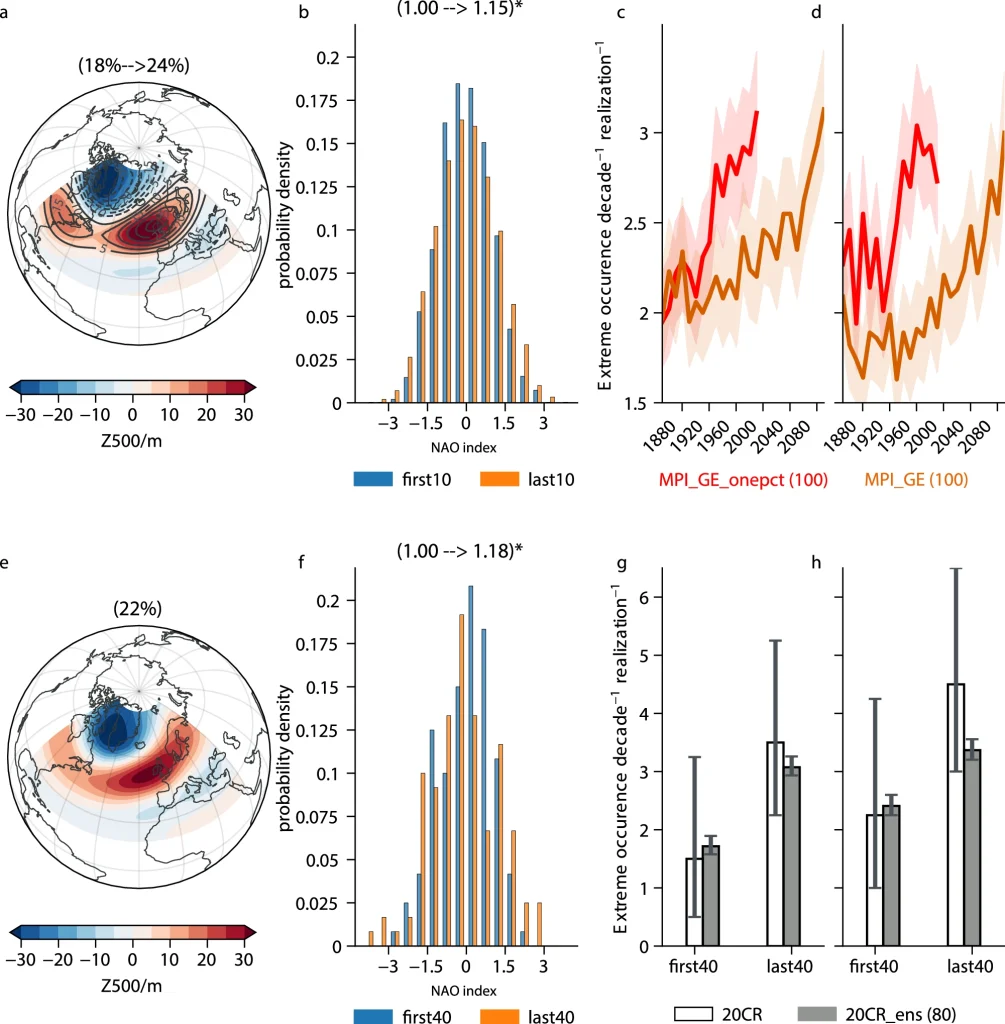Extreme European summers explained: New research uncovers key drivers and forecasting breakthroughs
Summers across Europe are becoming increasingly hot and extreme. New research conducted by climate scientists from the Max Planck Institute for Meteorology in Hamburg is helping to explain why this shift is happening, what mechanisms are driving it, and how we can better predict and prepare for the intensifying risks.
Two recent scientific publications offer crucial insights:
- More weather extremes in Europe during the summer under climate change – Quan Liu, Jürgen Bader, Johann H. Jungclaus, and Daniela Matei
- Anomalously warm European summers predicted more accurately by considering sub-decadal North Atlantic Ocean heat accumulation – Lara Wallberg, Laura Suarez-Gutierrez, Daniela Matei, Daniel Krieger, Wolfgang A. Müller
Together, these studies show that Europe’s increasingly extreme summers are being driven by shifts in atmospheric circulation, ocean heat accumulation, and a rise in variability within a key driver of European weather: the North Atlantic Oscillation (NAO). They also provide promising new tools for seasonal and decadal climate prediction.
1. More weather extremes in Europe during the summer under climate change
This first study reveals that climate change is amplifying the extremes of the summertime North Atlantic Oscillation (NAO). Since extremes occur very rarely by definition, a sufficiently large database is required to reliably determine their changes. Using several climate models and ensembles of up to one hundred simulations of the climate from 1850 to 2100, the scientists investigated NAO trends and changes in its variability in an up to four degrees warmer.
The researchers found that the variability of the NAO during summer is increasing as global temperatures rise, leading to more frequent and intense swings between its positive and negative phases. Looking into the past by using observation-based so-called reanalysis data, the team has found that there have been more NAO extremes in the most recent 40 years compared to the earlier observational record.

Researchers stated that these extremes can significantly impact weather patterns across Europe: positive phases are linked to cooler, stormier conditions over north-western Europe and prolonged heatwaves and droughts over the Mediterranean region, while during negative phases, the opposite occurs. The study attributes this growing volatility to shifts in atmospheric dynamics, including poleward movement of the jet stream and increased blocking over Greenland. This heightened variability poses new challenges for forecasting and managing summer weather risks, particularly in north-western Europe and southern Europe, where the consequences of extreme NAO events are most pronounced.
Fig. 1: The occurrence of summer NAO extremes at 500 hPa increases under global warming.
2. Anomalously warm European summers predicted more accurately by considering sub-decadal North Atlantic Ocean heat accumulation
This publication finds that including short-term (sub‑decadal) heat build‑up in the North Atlantic Ocean significantly enhances the accuracy of forecasting unusually hot European summers. By integrating ocean heat content variability on scales shorter than a decade into predictive models, researchers show that summer temperature anomalies across Europe can be anticipated more reliably than by atmospheric factors alone.
Using a combination of observational data and model simulations, they first uncover a coupled mechanism: heat stored in the North Atlantic over several years influences atmospheric patterns and ultimately contributes to European heatwaves. By recognising and quantifying this memory effect in the ocean, the research offers a valuable step toward improving seasonal to decadal climate forecasts for the region.
This study then develops a method to improve predictions of hot European summers by accounting for anomalies in North Atlantic heat transport. The team found that unusually warm summers are often preceded by a build-up of ocean heat up to three years in advance.
By integrating this heat accumulation into climate models and selecting simulations that accurately reflect these patterns, scientists can better reproduce past extreme summers and forecast future events more reliably. This technique extends forecast lead times by several years, representing a major advance for early-warning systems. It is especially valuable for preparing sectors such as human health, agriculture, and ecosystems for the impacts of extreme heat.

Fig.1: Ensemble Selection and attached mechanism for CEU-SAT predictions.
Conclusion
Taken together, these studies provide a much sharper understanding of the forces shaping Europe’s summer climate. These advances suggest that while we can’t prevent extreme summer events, we can become much better at predicting them. How? By giving governments, industries, and communities more time to adapt and respond. As the climate continues to warm, these findings are a crucial step toward building resilience across Europe.
Contact:
Dr. Daniela Matei, Max Planck Institute for Meteorology, daniela.matei@mpimet.mpg.de
Quan Liu, Max Planck Institute for Meteorology, quan.liu@mpimet.mpg.de
Dr. Lara Wallberg, Max Planck Institute for Meteorology, lara.wallberg@mpimet.mpg.de
